Review on Performance of Aspergillus and Penicillium Species in Biodegradation of Organochlorine and Organophosphorus Pesticides
Abstract
1. Introduction
2. Degradation of Organochlorine Pesticides by Aspergillus and Penicillium Species
3. Degradation of Organophosphorus Pesticides by Aspergillus and Penicillium Species
4. Biotransformation of Pesticide Belonging to Some Other Chemical Groups by Aspergillus and Penicillium Species
5. Concluding Remarks
Author Contributions
Funding
Institutional Review Board Statement
Informed Consent Statement
Data Availability Statement
Conflicts of Interest
References
- Pujar, N.K.; Premakshi, H.G.; Ganeshkar, M.P.; Kamanavalli, C.M. Biodegradation of Pesticides Used in Agriculture by Soil Microorganisms. In Enzymes for Pollutant Degradation; Mulla, S.I., Bharagava, R.N., Eds.; Springer Nature: Singapore, 2022; pp. 213–235. [Google Scholar] [CrossRef]
- Sharma, A.; Kumar, V.; Shahzad, B.; Tanveer, M.; Sidhu, G.P.S.; Handa, N.; Kohli, S.K.; Yadav, P.; Bali, A.S.; Parihar, R.D.; et al. Worldwide pesticide usage and its impacts on ecosystem. SN Appl. Sci. 2019, 1, 1446. [Google Scholar] [CrossRef]
- Rani, L.; Thapa, K.; Kanojia, N.; Sharma, N.; Singh, S.; Grewal, A.S.; Srivastav, A.L.; Kaushal, J. An extensive review on the consequences of chemical pesticides on human health and environment. J. Cleaner Prod. 2021, 283, 124657. [Google Scholar] [CrossRef]
- Rajmohan, K.S.; Chandrasekaran, R.; Varjani, S. A Review on Occurrence of Pesticides in Environment and Current Technologies for Their Remediation and Management. Indian J. Microbiol. 2020, 60, 125–138. [Google Scholar] [CrossRef]
- Souto, A.L.; Sylvestre, M.; Tölke, E.D.; Tavares, J.F.; Barbosa-Filho, J.M.; Cebrián-Torrejón, G. Plant-Derived Pesticides as an Alternative to Pest Management and Sustainable Agricultural Production: Prospects, Applications and Challenges. Molecules 2021, 26, 4835. [Google Scholar] [CrossRef] [PubMed]
- Köhler, H.-R.; Triebskorn, R. Wildlife Ecotoxicology of Pesticides: Can We Track Effects to the Population Level and Beyond? Science 2013, 341, 759. [Google Scholar] [CrossRef] [PubMed]
- Carvalho, F.P. Pesticides, environment, and food safety. Food Energy Secur. 2017, 6, 48–60. [Google Scholar] [CrossRef]
- Sehrawat, A.; Phour, M.; Kumar, R.; Sindhu, S.S. Bioremediation of Pesticides: An Eco-Friendly Approach for Environment Sustainability. In Microbial Rejuvenation of Polluted Environment: Volume 1; Panpatte, D.G., Jhala, Y.K., Eds.; Springer: Singapore, 2021; pp. 23–84. [Google Scholar] [CrossRef]
- Chatterjee, A.; Mandal, M.K.; Chaurasia, N. Microbial services in agro-environmental management. In New and Future Developments in Microbial Biotechnology and Bioengineering: Microbes in Soil, Crop and Environmental Sustainability; Singh, J.S., Ed.; Elsevier: Amsterdam, The Netherlands, 2019; pp. 259–272. [Google Scholar] [CrossRef]
- Morillo, E.; Villaverde, J. Advanced technologies for the remediation of pesticide-contaminated soils. Sci. Total Environ. 2017, 586, 576–597. [Google Scholar] [CrossRef]
- Dash, D.M.; Osborne, W.J. A systematic review on the implementation of advanced and evolutionary biotechnological tools for efficient bioremediation of organophosphorus pesticides. Chemosphere 2023, 313, 137506. [Google Scholar] [CrossRef]
- Bhatt, P.; Bhatt, K.; Chen, W.-J.; Huang, Y.; Xiao, Y.; Wu, S.; Lei, Q.; Zhong, J.; Zhu, X.; Chen, S. Bioremediation potential of laccase for catalysis of glyphosate, isoproturon, lignin, and parathion: Molecular docking, dynamics, and simulation. J. Hazard. Mater. 2023, 443, 130319. [Google Scholar] [CrossRef]
- Bhatt, P.; Bhatt, K.; Sharma, A.; Zhang, W.; Mishra, S.; Chen, S. Biotechnological basis of microbial consortia for the removal of pesticides from the environment. Crit. Rev. Biotechnol. 2021, 41, 317–338. [Google Scholar] [CrossRef]
- Bhatt, P.; Bhatt, K.; Huang, Y.; Li, J.; Wu, S.; Chen, S. Biofilm formation in xenobiotic-degrading microorganisms. Crit. Rev. Biotechnol. 2022, 1–21. [Google Scholar] [CrossRef]
- Conde-Avila, V.; Ortega-Martínez, L.D.; Loera, O.; El Kassis, E.G.; Dávila, J.G.; Valenzuela, C.M.; Armendáriz, B.P. Pesticides degradation by immobilised microorganisms. Int. J. Environ. Anal. Chem. 2021, 101, 2975–3005. [Google Scholar] [CrossRef]
- Hyde, K.D.; Xu, J.; Rapior, S.; Jeewon, R.; Lumyong, S.; Niego, A.G.T.; Abeywickrama, P.D.; Aluthmuhandiram, J.V.S.; Brahamanage, R.S.; Brooks, S.; et al. The amazing potential of fungi: 50 ways we can exploit fungi industrially. Fungal Divers. 2019, 97, 1–136. [Google Scholar] [CrossRef]
- Akhtar, N.; Mannan, M.A.-U. Mycoremediation: Expunging environmental pollutants. Biotechnol. Rep. 2020, 26, e00452. [Google Scholar] [CrossRef]
- Dickson, U.J.; Coffey, M.; Mortimer, R.J.G.; di Bonito, M.; Ray, N. Mycoremediation of petroleum contaminated soils: Progress, prospects and perspectives. Environ. Sci. Process. Impacts 2019, 21, 1446–1458. [Google Scholar] [CrossRef]
- Kołwzan, B.; Adamiak, W.; Dziubek, A.M. Possibilities of using fungi in technologies of purification and remediation of selected environmental elements. Ochr. Srodowiska 2018, 40, 3–20. [Google Scholar]
- Cui, T.; Yuan, B.; Guo, H.; Tian, H.; Wang, W.; Ma, Y.; Li, C.; Fei, Q. Enhanced lignin biodegradation by consortium of white rot fungi: Microbial synergistic effects and product mapping. Biotechnol. Biofuels 2021, 14, 162. [Google Scholar] [CrossRef] [PubMed]
- Hikmah, M.; Setyaningsih, R.; Pangastuti, A. The Potential of Lignolytic Trichoderma Isolates in LDPE (Low Density Polyethylene) Plastic Biodegradation. IOP Conf. Ser. Mater. Sci. Eng. 2018, 333, 012076. [Google Scholar] [CrossRef]
- Karas, P.A.; Perruchon, C.; Exarhou, K.; Ehaliotis, C.; Karpouzas, D.G. Potential for bioremediation of agro-industrial effluents with high loads of pesticides by selected fungi. Biodegradation 2011, 22, 215–228. [Google Scholar] [CrossRef]
- Bisht, J.; Harsh, N.S.K.; Palni, L.M.S.; Agnihotri, V.; Kumar, A. Biodegradation of chlorinated organic pesticides endosulfan and chlorpyrifos in soil extract broth using fungi. Remediation 2019, 29, 63–77. [Google Scholar] [CrossRef]
- Hu, K.; Barbieri, M.V.; López-García, E.; Postigo, C.; López de Alda, M.; Caminal, G.; Sarrà, M. Fungal degradation of selected medium to highly polar pesticides by Trametes versicolor: Kinetics, biodegradation pathways, and ecotoxicity of treated waters. Anal. Bioanal. Chem. 2021, 414, 439–449. [Google Scholar] [CrossRef] [PubMed]
- Marco-Urrea, E.; García-Romera, I.; Aranda, E. Potential of non-ligninolytic fungi in bioremediation of chlorinated and polycyclic aromatic hydrocarbons. New Biotechnol. 2015, 32, 620–628. [Google Scholar] [CrossRef] [PubMed]
- Magnoli, K.; Carranza, C.; Aluffi, M.; Magnoli, C.; Barberis, C. Fungal biodegradation of chlorinated herbicides: An overview with an emphasis on 2,4-D in Argentina. Biodegradation 2023, 34, 199–214. [Google Scholar] [CrossRef]
- Zhu, C.; Wang, D.; Zhang, J.W.; Qu, C.S.; Hua, Z.L.; Zhang, M.C.; Wang, S. Microbial community functional diversity in an organochlorine contaminated site and evaluation of biodegradation efficiency. Appl. Ecol. Environ. Res. 2019, 17, 12537–12549. [Google Scholar] [CrossRef]
- Aluffi, M.E.; Carranza, C.S.; Benito, N.; Magnoli, K.; Magnoli, C.E.; Barberis, C.L. Isolation of culturable mycota from Argentinean soils exposed or not-exposed to pesticides and determination of glyphosate tolerance of fungal species in media supplied with the herbicide. Rev. Argent. Microbiol. 2020, 52, 221–230. [Google Scholar] [CrossRef] [PubMed]
- Hernandez, M.M.; Menéndez, C.M. Influence of seasonality and management practices on diversity and composition of fungal communities in vineyard soils. Appl. Soil Ecol. 2019, 135, 113–119. [Google Scholar] [CrossRef]
- Ayansina, A.D.V.; Oso, B.A. Effect of two commonly used herbicides on soil microflora at two different concentrations. Afr. J. Biotechnol. 2006, 5, 129–132. [Google Scholar]
- Romero-Aguilar, M.; Tovar-Sánchez, E.; Sánchez-Salinas, E.; Mussali-Galante, P.; Sánchez-Meza, J.C.; Castrejón-Godínez, M.L.; Dantán-González, E.; Trujillo-Vera, M.Á.; Ortiz-Hernández, M.L. Penicillium sp. as an organism that degrades endosulfan and reduces its genotoxic effects. Springerplus 2014, 3, 536. [Google Scholar] [CrossRef]
- Bhalerao, T.S.; Puranik, P.R. Biodegradation of organochlorine pesticide, endosulfan, by a fungal soil isolate, Aspergillus niger. Int. Biodeterior. Biodegrad. 2007, 59, 315–321. [Google Scholar] [CrossRef]
- Tejomyee, S.B. Biominerlization and Possible Endosulfan Degradation Pathway Adapted by Aspergillus niger. J. Microbiol. Biotechnol. 2013, 23, 1610–1616. [Google Scholar] [CrossRef]
- Mukherjee, I.; Gopal, M. Degradation of beta-endosulfan by Aspergillus niger. Toxicol. Environ. Chem. 1994, 46, 217–221. [Google Scholar] [CrossRef]
- Mukherjee, I.; Mittal, A. Bioremediation of Endosulfan Using Aspergillus terreus and Cladosporium oxysporum. Bull. Environ. Contam. Toxicol. 2005, 75, 1034–1040. [Google Scholar] [CrossRef]
- Hussain, S.; Arshad, M.; Saleem, M.; Zahir, Z.A. Screening of soil fungi for in vitro degradation of endosulfan. World J. Microbiol. Biotechnol. 2007, 23, 939–945. [Google Scholar] [CrossRef]
- Mukhtar, H.; Khizer, I.; Nawaz, A.; Asad Ur, R.; Ikram Ul, H. Biodegradation of endosulfan by Aspergillus niger isolated from cotton fields of Punjab, Pakistan. Pak. J. Bot. 2015, 47, 333–336. [Google Scholar]
- Ahmad, K.S. Remedial potential of bacterial and fungal strains (Bacillus subtilis, Aspergillus niger, Aspergillus flavus and Penicillium chrysogenum) against organochlorine insecticide Endosulfan. Folia Microbiol. 2020, 65, 801–810. [Google Scholar] [CrossRef]
- Goswami, S.; Vig, K.; Singh, D.K. Biodegradation of α and β endosulfan by Aspergillus sydoni. Chemosphere 2009, 75, 883–888. [Google Scholar] [CrossRef]
- Silambarasan, S.; Abraham, J. Mycoremediation of Endosulfan and Its Metabolites in Aqueous Medium and Soil by Botryosphaeria laricina JAS6 and Aspergillus tamarii JAS9. PLoS ONE 2013, 8, e77170. [Google Scholar] [CrossRef]
- Abraham, J.; Silambarasan, S. Biomineralization and formulation of endosulfan degrading bacterial and fungal consortiums. Pestic. Biochem. Physiol. 2014, 116, 24–31. [Google Scholar] [CrossRef]
- Taşeli, B.K. Dehalogenation of Lindane by Penicillium camemberti. Bull. Environ. Contam. Toxicol. 2006, 77, 882–887. [Google Scholar] [CrossRef]
- Kumaravel, S.; Praveen Kumar, P.; Vasuki, P. GC-MS study on microbial degradation of Lindane. Int. J. Appl. Chem. 2010, 6, 363–366. [Google Scholar]
- Birolli, W.G.; Yamamoto, K.Y.; de Oliveira, J.R.; Nitschke, M.; Seleghim, M.H.R.; Porto, A.L.M. Biotransformation of dieldrin by the marine fungus Penicillium miczynskii CBMAI 930. Biocatal. Agric. Biotechnol. 2015, 4, 39–43. [Google Scholar] [CrossRef]
- Supreeth, M.; Raju, N.S. Biotransformation of chlorpyrifos and endosulfan by bacteria and fungi. Appl. Microbiol. Biotechnol. 2017, 101, 5961–5971. [Google Scholar] [CrossRef]
- Taşeli, B.K.; Gökçay, C.F. Identification of electron acceptor properties of Penicillium camemberti used for effective treatment of chlorinated organic compounds. Fresenius Environ. Bull. 2005, 14, 347–352. [Google Scholar]
- Asemoloye, M.D.; Ahmad, R.; Jonathan, S.G. Synergistic rhizosphere degradation of γ-hexachlorocyclohexane (lindane) through the combinatorial plant-fungal action. PLoS ONE 2017, 12, e0183373. [Google Scholar] [CrossRef] [PubMed]
- Ortega, S.N.; Nitschke, M.; Mouad, A.M.; Landgraf, M.D.; Rezende, M.O.O.; Seleghim, M.H.R.; Sette, L.D.; Porto, A.L.M. Isolation of Brazilian marine fungi capable of growing on DDD pesticide. Biodegradation 2011, 22, 43–50. [Google Scholar] [CrossRef]
- Osborne, R.L.; Raner, G.M.; Hager, L.P.; Dawson, J.H. C. fumago Chloroperoxidase is also a Dehaloperoxidase: Oxidative Dehalogenation of Halophenols. J. Am. Chem. Soc. 2006, 128, 1036–1037. [Google Scholar] [CrossRef]
- Soares, P.R.S.; Birolli, W.G.; Ferreira, I.M.; Porto, A.L.M. Biodegradation pathway of the organophosphate pesticides chlorpyrifos, methyl parathion and profenofos by the marine-derived fungus Aspergillus sydowii CBMAI 935 and its potential for methylation reactions of phenolic compounds. Mar. Pollut. Bull. 2021, 166, 112185. [Google Scholar] [CrossRef]
- Alvarenga, N.; Birolli, W.G.; Seleghim, M.H.R.; Porto, A.L.M. Biodegradation of methyl parathion by whole cells of marine-derived fungi Aspergillus sydowii and Penicillium decaturense. Chemosphere 2014, 117, 47–52. [Google Scholar] [CrossRef]
- Marinho, G.; Rodrigues, K.; Araujo, R.; Pinheiro, Z.B.; Silva, G.M.M. Glucose effect on degradation kinetics of methyl parathion by filamentous fungi species Aspergillus niger AN400. Eng. Sanit. Ambient. 2011, 16, 225–230. [Google Scholar] [CrossRef]
- Rodrigues, G.N.; Alvarenga, N.; Vacondio, B.; de Vasconcellos, S.P.; Passarini, M.R.Z.; Seleghim, M.H.R.; Porto, A.L.M. Biotransformation of methyl parathion by marine-derived fungi isolated from ascidian Didemnum ligulum. Biocatal. Agric. Biotechnol. 2016, 7, 24–30. [Google Scholar] [CrossRef]
- Mohapatra, D.; Rath, S.K.; Mohapatra, P.K. Evaluating a preparation of malathion-tolerant Aspergillus niger MRU01 for accelerated removal of four organophosphorus insecticides. J. Appl. Chem. Biotechnol. 2021, 96, 1603–1610. [Google Scholar] [CrossRef]
- Derbalah, A.; Khattab, I.; Saad Allah, M. Isolation and molecular identification of Aspergillus flavus and the study of its potential for malathion biodegradation in water. World J. Microbiol. Biotechnol. 2020, 36, 1–11. [Google Scholar] [CrossRef]
- Yadav, M.; Srivastva, N.; Shukla, A.K.; Singh, R.S.; Upadhyay, S.N.; Dubey, S.K. Efficacy of Aspergillus sp. for degradation of chlorpyrifos in batch and continuous aerated packed bed bioreactors. Appl. Biochem. Biotechnol. 2015, 175, 16–24. [Google Scholar] [CrossRef] [PubMed]
- Anggreini, C.D.; Tazkiaturrizki, T.; Rinanti, A. Chlorpyrifos removal improvement in liquid media by Aspergillus fumigatus. Int. J. Sci. Technol. Res. 2020, 9, 1475–1479. [Google Scholar]
- Anggreini, C.D.; Tazkiaturrizki, T.; Rinanti, A. The effect of temperature and concentration of Aspergillus fumigatus on chlorpyrifos removal. J. Phys. Conf. Ser. 2019, 1402, 033004. [Google Scholar] [CrossRef]
- Silambarasan, S.; Abraham, J. Ecofriendly Method for Bioremediation of Chlorpyrifos from Agricultural Soil by Novel Fungus Aspergillus terreus JAS1. Water Air Soil Pollut. 2012, 224, 1369. [Google Scholar] [CrossRef]
- Barberis, C.L.; Carranza, C.S.; Magnoli, K.; Benito, N.; Magnoli, C.E. Development and removal ability of non-toxigenic Aspergillus section Flavi in presence of atrazine, chlorpyrifos and endosulfan. Rev. Argent. Microbiol. 2019, 51, 3–11. [Google Scholar] [CrossRef]
- Abdel-Wareth, M.T.A.; Abd El-Hamid, R.M. Mycoremediation of chlorpyrifos and lambda-cyhalothrin by two species of filamentous fungi. Int. J. Environ. Stud. 2016, 73, 974–987. [Google Scholar] [CrossRef]
- Mukherjee, I.; Gopal, M. Degradation of chlorpyrifos by two soil fungi Aspergillus niger and Trichoderma viride. Toxicol. Environ. Chem. 1996, 57, 145–151. [Google Scholar] [CrossRef]
- Abd-Alrahman, S.H.; Mostafa, A.A. Mycoremediation of organophosphorous insecticide chlorpyrifos by fungal soil isolates. J. Pure Appl. Microbiol. 2014, 8, 2945–2951. [Google Scholar]
- Omar, S.A. Availability of phosphorus and sulfur of insecticide origin by fungi. Biodegradation 1998, 9, 327–336. [Google Scholar] [CrossRef] [PubMed]
- Zhao, R.B.; Bao, H.Y.; Liu, Y.X. Isolation and Characterization of Penicillium oxalicum ZHJ6 for Biodegradation of Methamidophos. Agric. Sci. China 2010, 9, 695–703. [Google Scholar] [CrossRef]
- Fu, G.M.; Chen, Y.; Li, R.Y.; Yuan, X.Q.; Liu, C.M.; Li, B.; Wan, Y. Pathway and rate-limiting step of glyphosate degradation by Aspergillus oryzae A-F02. Prep. Biochem. Biotechnol. 2017, 47, 782–788. [Google Scholar] [CrossRef] [PubMed]
- Yadav, M.; Srivastva, N.; Singh, R.S.; Upadhyay, S.N.; Dubey, S.K. Biodegradation of chlorpyrifos by Pseudomonas sp. in a continuous packed bed bioreactor. Bioresour. Technol. 2014, 165, 265–269. [Google Scholar] [CrossRef]
- Alvarenga, N.; Birolli, W.G.; Nitschke, M.; Rezende, M.O.O.; Seleghim, M.H.R.; Porto, A.L.M. Biodegradation of Chlorpyrifos by Whole Cells of Marine-Derived Fungi Aspergillus sydowii and Trichoderma sp. J. Microb. Biochem. Technol. 2015, 7, 133–139. [Google Scholar]
- Karpouzas, D.G.; Morgan, J.A.W.; Walker, A. Isolation and characterisation of ethoprophos-degrading bacteria. FEMS Microbiol. Ecol. 2000, 33, 209–218. [Google Scholar] [CrossRef]
- Shah, P.C.; Kumar, V.R.; Dastager, S.G.; Khire, J.M. Phytase production by Aspergillus niger NCIM 563 for a novel application to degrade organophosphorus pesticides. AMB Express 2017, 7, 1–11. [Google Scholar] [CrossRef]
- Carranza, C.S.; Regñicoli, J.P.; Aluffi, M.E.; Benito, N.; Chiacchiera, S.M.; Barberis, C.L.; Magnoli, C.E. Glyphosate in vitro removal and tolerance by Aspergillus oryzae in soil microcosms. Int. J. Environ. Sci. Technol. 2019, 16, 7673–7682. [Google Scholar] [CrossRef]
- Abraham, J.; Mukherjee, P.; Bose, D.; Dutta, A. Utilization of monocrotophos by Aspergillus sojae strain JPDA1 isolated from sugarcane fields of Vellore district in India. Res. J. Pharm. Technol. 2016, 9, 1451–1456. [Google Scholar] [CrossRef]
- Abraham, J.; Reddy, M.S. Enhanced degradation of monocrotophos using Achromobacter strain jas10 and Aspergillus sp. Isolated from sugarcane fields in Vellore. Pollut. Res. 2015, 34, 539–545. [Google Scholar]
- Bhalerao, T.S.; Puranik, P.R. Microbial degradation of monocrotophos by Aspergillus oryzae. Int. Biodeterior. Biodegrad. 2009, 63, 503–508. [Google Scholar] [CrossRef]
- Pinto, A.P.; Serrano, C.; Pires, T.; Mestrinho, E.; Dias, L.; Teixeira, D.M.; Caldeira, A.T. Degradation of terbuthylazine, difenoconazole and pendimethalin pesticides by selected fungi cultures. Sci. Total Environ. 2012, 435–436, 402–410. [Google Scholar] [CrossRef] [PubMed]
- Ahmad, K.S.; Gul, P.; Gul, M.M. Efficient fungal and bacterial facilitated remediation of thiencarbazone methyl in the environment. Environ. Res. 2020, 188, 109811. [Google Scholar] [CrossRef] [PubMed]
- Derbalah, A.S.H.; Belal, E.B.; Massoud, A.H. Biodegradability of famoxadone by various microbial isolates in aquatic systems. Land Contam. Reclam. 2008, 16, 13–23. [Google Scholar] [CrossRef]
- Gajendiran, A.; Abraham, J. Biomineralisation of fipronil and its major metabolite, fipronil sulfone, by Aspergillus glaucus strain AJAG1 with enzymes studies and bioformulation. 3 Biotech 2017, 7, 212. [Google Scholar] [CrossRef] [PubMed]
- Chang, X.; Liang, J.; Sun, Y.; Zhao, L.; Zhou, B.; Li, X.; Li, Y. Isolation, degradation performance and field application of the metolachlor-degrading fungus Penicillium oxalicum MET-F-1. Appl. Sci. 2020, 10, 8556. [Google Scholar] [CrossRef]
- Sanyal, D.; Kulshrestha, G. Degradation of Metolachlor in Crude Extract of Aspergillus flavus. J. Environ. Sci. Health Part B 2004, 39, 653–664. [Google Scholar] [CrossRef]
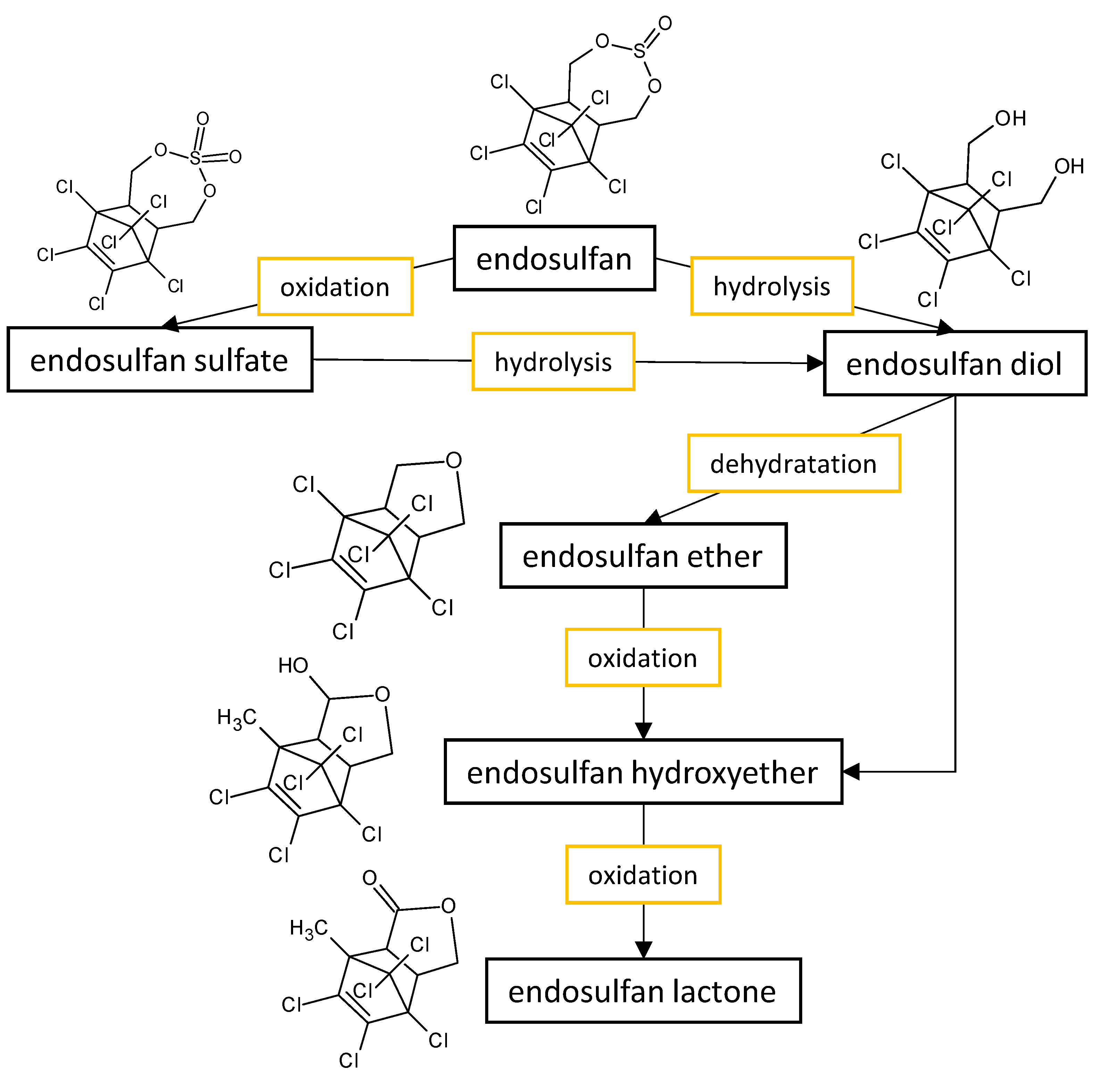
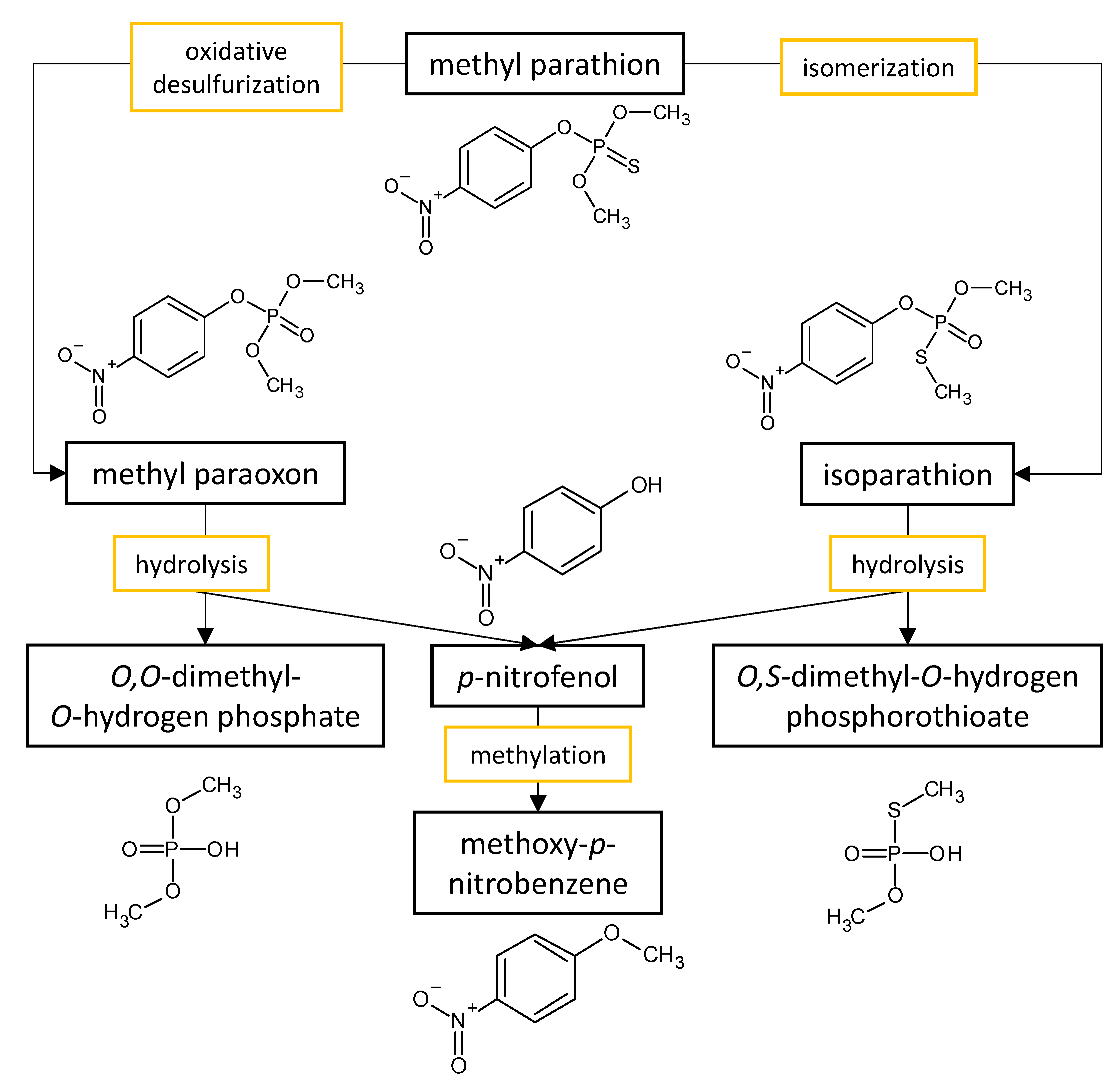
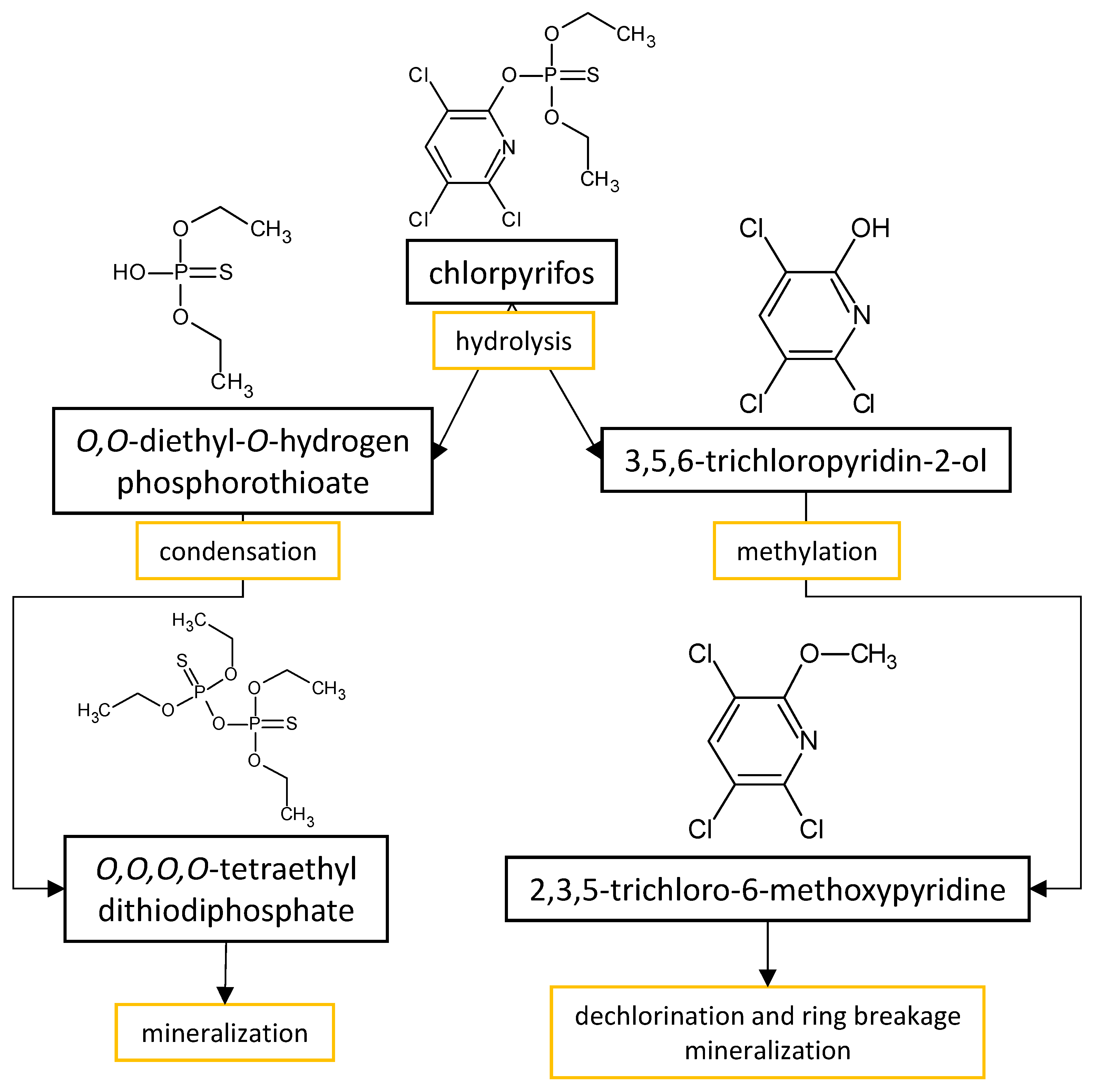
| Pesticide Name | Function | Chemical Structure |
|---|---|---|
| lindane | insecticide, acaricide and rodenticide | 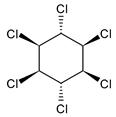 |
| endosulfan | insecticide and acaricide | 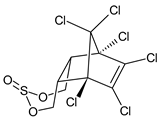 |
| dieldrin | insecticide | 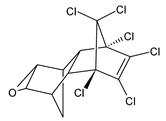 |
| chlorpyrifos | insecticide | 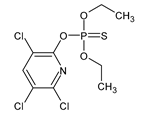 |
| methyl parathion | insecticide | 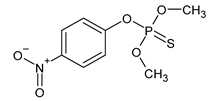 |
| profenofos | insecticide |  |
| dimethoate | insecticide and acaricide | 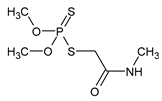 |
| methamidophos | insecticide |  |
| malathion | insecticide and acaricide | 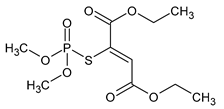 |
| cyolan (phosfolan) | insecticide | 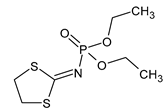 |
| glyphosate | herbicide |  |
| Fungal Strain | Degradation Efficiency | Cultivation Conditions | Degradation Products | Reference |
|---|---|---|---|---|
| Penicillium sp. CHE23 | 94.8% | modified mineral salt medium with ~57 mg·L−1 of endosulfan as carbon source incubated for 144 h at 30 °C and 150 rpm | not reported | Romero-Aguilar et al. [31] |
| Aspergillus niger | complete degradation | Czapek–Dox broth with 350 mg·L−1 of β-endosulfan source incubated for 120 h at 30 °C and 120 rpm | endosulfan sulfate being most persistent metabolite; after 120 h, complete mineralization was suggested | Bhalerao and Puranik [32] |
| Aspergillus niger ARIFCC 1053 | complete degradation | Czapek–Dox broth with 1000 mg·L−1 of technical-grade endosulfan incubated for 7 days at 30 °C and 120 rpm | complete mineralization | Tejomyee [33] |
| Aspergillus niger | 98.6% | Czapek–Dox broth with 15.4 µg·g−1 of technical-grade endosulfan incubated for 15 days at 30 °C and intermittent shaking | not reported | Mukherjee and Gopal [34] |
| Aspergillus terreus, (Cladosporium oxysporum) | 91.5%, (89%) | potato dextrose broth with 1.89 µg·g−1 of technical-grade endosulfan incubated for 15 days at 25 °C | trace concentrations of endosulfan sulfate were detected during incubation; no end products were reported | Mukherjee and Mittal [35] |
| Aspergillus terricola, Aspergillus terreus, (Chaetosartorya stromatoides) | ~90% | non-sulfur medium enriched with 100 mg·L−1 of α or β endosulfan isomers incubated for 12 days at 30 °C and 150 rpm (pH 6) | major metabolic products being endosulfan diol and endosulfan ether | Hussain et al. [36] |
| Aspergillus niger AE | complete degradation (0.1% endosulfan), and 76% (0.5% endosulfan) | Czapek–Dox broth spiked up to 5000 mg·L−1 (0.5%) of endosulfan incubated for 8 days at 30 °C and 180 rpm (optimum at pH 4) | not reported | Mukhtar et al. [37] |
| Aspergillus niger, Aspergillus flavus, Penicillium chrysogenum | 77% (AN), 72% (AF), 69% (PC) | potato dextrose broth with 10 mg·L−1 of endosulfan incubated for 35 days at 29 °C | desulphurized transformants of endosulfan, while chlorine atoms remained imperforated | Ahmad [38] |
| Aspergillus sydoni | 95% (α isomer), 97% (β isomer) | Czapek–Dox broth with 100 mg·L−1 of α or β endosulfan isomers incubated for 18 days at 30 °C and 150 rpm | major metabolic products being endosulfan sulfate | Goswami et al. [39] |
| Aspergillus tamarii JAS9, (Botryosphaerialaricina JAS6) | kinetic analysis shows that 50% of α and β endosulfan isomers were degraded in 1.7 and 2.2 days by JAS9, respectively (4.2 days for 50% reduction of β endosulfan by JAS6) | M1 medium with 1000 mg·L−1 of technical-grade endosulfan as carbon source incubated for 10 days at 30 °C and 120 rpm | not reported | Silambarasan and Abraham [40] |
| fungal consortium (Botryosphaeria laricina JAS6, Aspergillus tamarii JAS9 and Lasiodiplodia sp. JAS12) | complete degradation (a 50% degradation calculated on the 3rd day of incubation) | M1 medium with 1000 mg·L−1 of technical-grade endosulfan as carbon source incubated for 120 h at 30 °C and 120 rpm | complete mineralization | Abraham and Silambarasan [41] |
| Penicillium camemberti | 70% | acetate-free basal medium supplemented with 1 mM lindane incubated for 120 h at 25 °C and 80 rpm (pH 5) | not reported | Taşeli [42] |
| Aspergillus fumigatus | complete degradation | lindane initial concentration is not indicated; medium (Sabouraud dextrose broth or Nutrient broth) incubated for 5 days at 25 °C | not reported | Kumaravel et al. [43] |
| Penicillium miczynskii CBMAI 93 | 90% | culture medium of artificial salt water supplemented with 50 mg·L−1 of dieldrin incubated for 14 days at 32 °C and 130 rpm | no intermediate degradation products were detected, suggesting dieldrin mineralization of conjugation | Birolli et al. [44] |
| Fungal Strain | Degradation Efficiency | Cultivation Conditions | Degradation Products | Reference |
|---|---|---|---|---|
| Aspergillus sydowii CBMAI 935 | 32%, 80% and 52% of chlorpyrifos, methyl parathion, and profenofos, respectively | 2% malt liquid medium with 50 mg·L−1 of chlorpyrifos, methyl parathion or profenofos incubated for 30 days at 32 °C and 130 rpm | chlorpyrifos degradation resulted in tetraethyl dithiodi- phosphate and 2,3,5-trichloro-6-methoxypyridine; methyl parathion hydrloyzed into methylated phosphate and phosphorothioates, and 1-methoxy-4-nitrobenzen; profenofos degraded into 4-bromo-2-chloro-1-methoxybenzen and O,O-diethyl-S-proyl phosphorothioates | Soares et al. [50] |
| Aspergillus sydowii CBMAI 935, Penicillium decaturense CBMAI 1234 | 80% | liquid mineral medium supplemented with KNO3 and 100 mg·L−1 of methyl parathion incubated for 30 days at 32 °C and 130 rpm | p-nitrophenol | Alvarenga et al. [51] |
| Aspergillus niger AN400 | 2% (glucose-free treatment, initial concentration of methyl parathion was 19.1 mg·L−1), 43% (glucose-treated medium, initial concentration of methyl parathion 24.9 mg·L−1) | glucose-free or glucose treated distilled water supplemented with Vishniac solution and up to 24.9 mg·L−1 of methyl parathion incubated for 27 days at 30 °C and 200 rpm | not reported | Marinho et al. [52] |
| Penicillium citrinum, (Fusarium proliferatum) | complete degradation (the biotic control had the same degradation efficiency) | 3% malt liquid medium with 30 mg·L−1 of methyl parathion incubated for 30 days at 32 °C and 130 rpm | not reported | Rodrigues et al. [53] |
| Aspergillus niger MRU01 | 70%, 54%, 58%, and 68% of malathion, parathion, chlorpyrifos and dimethoate, respectively | Czapek–Dox broth spiked with 500, 470, 260 and 680 μmol·L−1 (0.5%) of malathion, parathion, chlorpyrifos, and dimethoate, respectively, incubated for 5 days at 26 °C and 120 rpm (optimum at pH 4) | not reported | Mohapatra et al. [54] |
| Aspergillus flavus | complete degradation | mineral salt medium supplemented with 5 mg·L−1 of malathion incubated for 36 days at 30 °C (pH 7) on a rotatory shaker (optimized conditions) | not reported | Derbalah et al. [55] |
| Aspergillus sp. F1 | over 90% (89% at an inlet load of 180 mg·L−1·d−1) | bioreactor supplemented with 300 mg·L−1 of chlorpyrifos as the sole carbon source incubated at 28 °C (pH 7) with dissolved oxygen concentration of 5.8 mg·L−1 (optimized conditions) | not reported | Yadav et al. [56] |
| Aspergillus fumigatus | 99% | potato dextrose broth supplemented with chlorpyrifos (10%) incubated for 9 days at 25 °C (pH 7) and 180 rpm | not reported | Anggreini et al. [57] |
| Aspergillus fumigatus | 95.9% | potato dextrose broth with chlorpyrifos (1.5%) incubated for 5 days at 25 °C (pH 7) and 180 rpm | not reported | Anggreini et al. [58] |
| Aspergillus terreus JAS1 | complete degradation (after 24 h) | M1 medium supplemented with 300 mg·L−1 of chlorpyrifos as the sole carbon source incubated for 96 h at 30 °C and 120 rpm | 3,5,6-trichloropyridin-2-ol that was completely degraded after 48 h; no other metabolites were reported | Silambarasan and Abraham [59] |
| Aspergillus oryzae strains AM1 and AM2 | 73% (AM1), 50% (AM2) | Czapek–Dox broth spiked with 20 mg·L−1 of chlorpyrifos incubated for 30 days at 25 °C and 60 rpm (optimum at pH 4) | not reported | Barberis et al. [60] |
| Aspergillus viridinutans, Penicillium implicatum | 44.6% (A. viridinutans), 16.2% (P. implicatum) | potato dextrose broth with 20 mg·L−1 of chlorpyrifos incubated for 14 days at 28 °C | not reported; high losses of chlorpyrifos from culture medium were due to abiotic hydrolysis | Abdel-Wareth and Abd El-Hamid [61] |
| Aspergillus niger, (Trichoderma viride) | 72.3%, (95.7%) | Czapek–Dox broth spiked with 1.25 mg·L−1 of chlorpyrifos incubated for 14 days at 30 °C and intermittent shaking (pH 6.8) | not reported; high losses of chlorpyrifos from culture medium were due to abiotic hydrolysis | Mukherjee and Gopal [62] |
| Penicillium citrinum, Aspergillus niger, Aspergillus oryzae | 25.9% (P. citrinum), 64% (A. niger), 50.8% (A. oryzae) | Burkes mineral broth with 10 mg·L−1 of chlorpyrifos incubated for 15 days at 27 °C without shaking (pH 7.2) | not reported; high losses of chlorpyrifos from culture medium were due to abiotic hydrolysis | Abd-Alrahman and Mostafa [63] |
| Aspergillus niger | ~80% | soil extract medium with 10 mg·L−1 of chlorpyrifos incubated for 30 days at 25 °C and 60 rpm | 3,5,6-trichloro-2-pyridinol were detected below the concentration of 1 mg·L−1 | Karas et al. [22] |
| Aspergillus fumigatus, A. flavus, A. niger, A. ochraceus, A. tamarii, A. terreus, Penicillium chrysogenum, P. brevicompactum, P. citrinum, P. funiculosum | phosphor mineralization efficiencies ranged from 4 to 46% (Cyolan), from 9.5 to 26.8% (Malathion), and from 2.3 to 6.7% (Dursban) | Czapek–Dox broth spiked with 100 mg·L−1 of cyolan, malathion, and chlorpyrifos incubated for 35 days at 28 °C without shaking | not reported; media and biomass were analyzed for phosphor and sulfur that mineralized from the degradation of insecticide | Omar [64] |
| Penicillium oxalicum ZHJ6 | complete degradation | mineral salt medium with 1% glucose supplemented with 1 mg·L−1 of methamidophos as sole nitrogen source incubated for 12 days at 25 °C and pH of 5.0 (most favorable conditions) | inorganic phosphor, CH3SH, and CH3OH are hypothesized being formed | Zhao et al. [65] |
| Aspergillus oryzae A-F02 | ~13.7% | fermentation medium with 1.5 g·L−1 of glyphosate incubated for 144 h at 30 °C and 150 rpm | aminomethylphosphonic acid and methylamine, the latter being further degraded | Fu et al. [66] |
Disclaimer/Publisher’s Note: The statements, opinions and data contained in all publications are solely those of the individual author(s) and contributor(s) and not of MDPI and/or the editor(s). MDPI and/or the editor(s) disclaim responsibility for any injury to people or property resulting from any ideas, methods, instructions or products referred to in the content. |
© 2023 by the authors. Licensee MDPI, Basel, Switzerland. This article is an open access article distributed under the terms and conditions of the Creative Commons Attribution (CC BY) license (https://creativecommons.org/licenses/by/4.0/).
Share and Cite
Matúš, P.; Littera, P.; Farkas, B.; Urík, M. Review on Performance of Aspergillus and Penicillium Species in Biodegradation of Organochlorine and Organophosphorus Pesticides. Microorganisms 2023, 11, 1485. https://doi.org/10.3390/microorganisms11061485
Matúš P, Littera P, Farkas B, Urík M. Review on Performance of Aspergillus and Penicillium Species in Biodegradation of Organochlorine and Organophosphorus Pesticides. Microorganisms. 2023; 11(6):1485. https://doi.org/10.3390/microorganisms11061485
Chicago/Turabian StyleMatúš, Peter, Pavol Littera, Bence Farkas, and Martin Urík. 2023. "Review on Performance of Aspergillus and Penicillium Species in Biodegradation of Organochlorine and Organophosphorus Pesticides" Microorganisms 11, no. 6: 1485. https://doi.org/10.3390/microorganisms11061485
APA StyleMatúš, P., Littera, P., Farkas, B., & Urík, M. (2023). Review on Performance of Aspergillus and Penicillium Species in Biodegradation of Organochlorine and Organophosphorus Pesticides. Microorganisms, 11(6), 1485. https://doi.org/10.3390/microorganisms11061485






